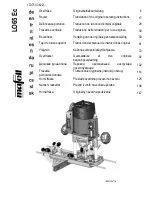
Chapter 9 BGP4+ Configuration
*> 1:1:1::/64
2002:9::2
300 i
*> 1:1:1:1::/64
2002:9::2
300 i
*> 1:1:1:2::/64
2002:9::2
300 i
*> 1:1:1:3::/64
2002:9::2
300 i
*> 1:1:1:4::/64
2002:9::2
300 i
A symbol "*" before a route entry indicates that the route is valid. A route marked with
the symbol ">" indicates that it is the optimal route. A route marked with the symbol "i"
indicates that it is an IGP route. A route marked with the symbol "e" indicates that it is
an EGP route. A route marked with the symbol "?" indicates that the origin of the route is
incomplete.
For a description of the sample output, refer to the following table:
Command Output
Description
Network
Indicates the destination address.
Next-hop
Indicates the next hop of the BGP route. A route with an
all-0s next hop indicates that the route is generated by the
local router itself.
Metric
Indicates the route metric.
LocPrf
Indicates the local preference of the routes learned by BGP.
RtPrf
Distance of the route. The default distance of the
EBGP-advertised route is 20, and the distance of the
IBGP-advertised route is 200.
Path
Indicates the route origin, which can be one of "IGP", "EGP"
and "incomplete".
The following is a sample output from the
show bgp ipv6 unicast summary
command:
ZXR10# show bgp ipv6 unicast summary
Neighbor
Ver
As
MsgRcvd
MsgSend
Up/Down
State/Pfx
Rcd
2002:2::2
4
400
7
11
00:15:45
Connect
2002:8::2
4
500
0
0
00:00:00
0
2002:9::2
4
300
37
38
00:17:44
5
For a description of the sample output, refer to the following table:
Command Output
Description
Neighbor
Indicates the BGP neighbor.
Ver
Indicates the BGP version.
As
Indicates the AS number of the neighbor.
MsgRcvd
Indicates the number of messages received by BGP.
MsgSend
Indicates the number of messages sent by BGP.
9-7
SJ-20150114102049-011|2015-01-15 (R1.0)
ZTE Proprietary and Confidential
















































